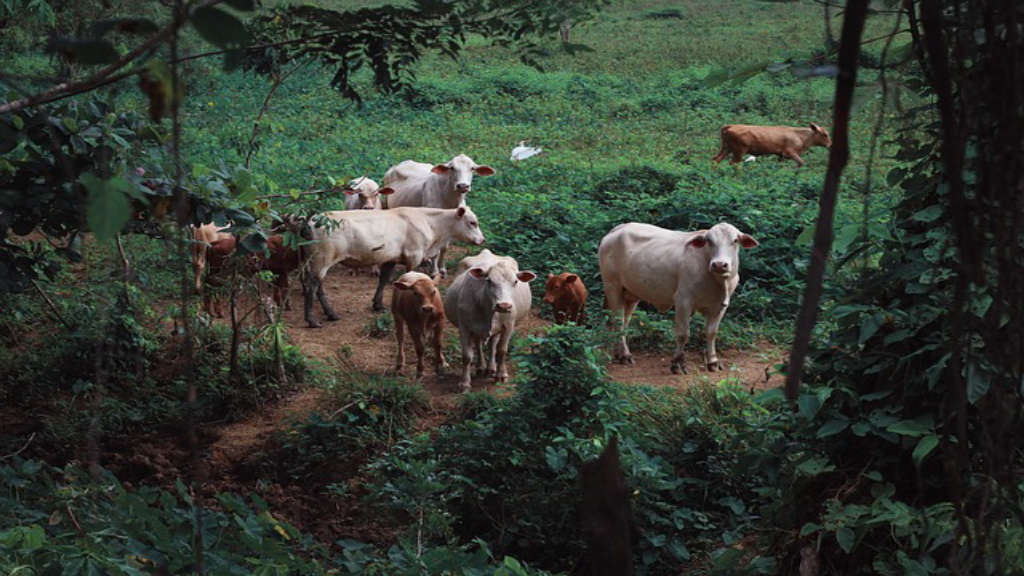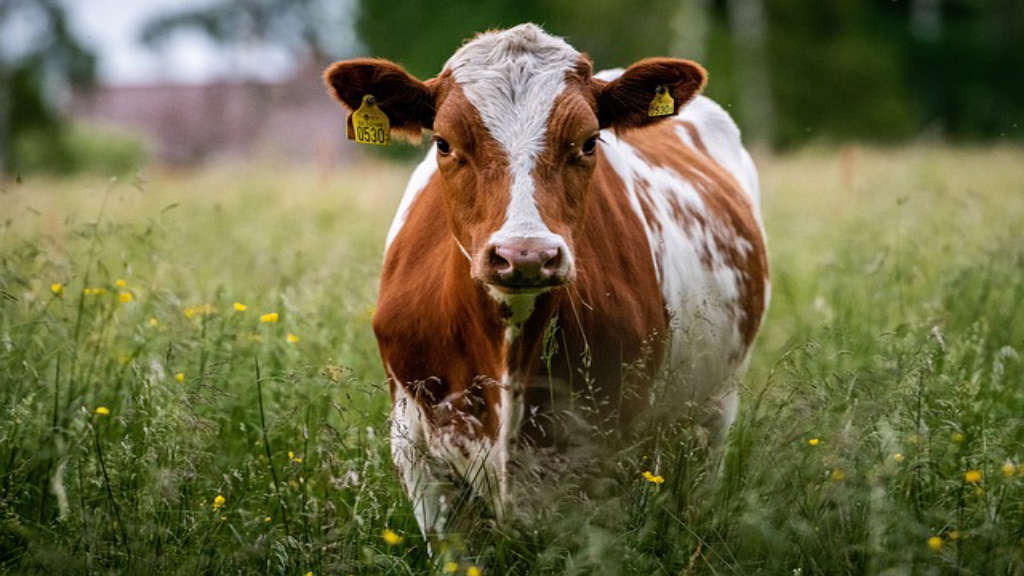In recent years, advancements in technology and veterinary practices have transformed the way we approach livestock health care. These innovative techniques not only prioritize the well-being of animals but also significantly enhance productivity on farms. As we move forward, understanding and adopting these practices is essential for creating a sustainable future in the agricultural sector. By embracing modern solutions, farmers can ensure their livestock thrive, leading to healthier ecosystems and improved food security.
Main Points
- Embracing technology for enhanced monitoring and diagnostics.
- Implementing preventive healthcare measures to reduce disease outbreaks.
- Promoting animal welfare to improve overall farm productivity.
- Utilizing data analytics for informed decision-making.
- Fostering collaboration between farmers and veterinarians.

Cutting-Edge Technologies Transforming Livestock Health Monitoring and Management
In recent years, the landscape of livestock health monitoring and management has been significantly reshaped by cutting-edge technologies. These advancements not only enhance animal welfare but also elevate the efficiency of farming operations. As we delve into the various innovations, it becomes evident that these technologies offer an unprecedented level of insight into livestock management.
1. Wearable Devices
One of the most notable trends in livestock management is the use of wearable devices. These gadgets, which are often compared to fitness trackers for humans, provide real-time health data. This information can be invaluable for farmers. Key features include:
- Monitoring Vital Signs: Devices can track heart rate, temperature, and activity levels, helping detect unusual behaviors or health issues.
- Location Tracking: GPS-enabled devices ensure that farmers know where their livestock are at all times, thus improving security and safety.
- Behavior Analysis: Analyzing movement patterns can reveal stress or discomfort, prompting timely interventions.
2. Data Analytics
As technology evolves, the role of data analytics in livestock health is becoming paramount. Farms are now utilizing big data to analyze herd health trends over time. This analysis allows farmers to make informed decisions based on historical data rather than relying solely on intuition. However, the sheer volume of data can lead to confusion if not managed properly. Thus, employing specialized software is essential to interpret these vast datasets effectively.
3. Remote Sensing Technology
Remote sensing technologies, such as drones and satellites, can also play a crucial role in monitoring livestock health. By collecting aerial imagery, farmers can identify changes in pasture conditions or herd distribution. In addition, this technology allows for:
- Environmental Monitoring: Assessing land use and assessing the impact of weather on livestock.
- Flock Management: Drones can aid in herding and monitoring large groups of animals more efficiently than traditional methods.
- Disease Surveillance: Early detection of pest infestations or plant diseases can prevent potential health crises among livestock.
4. Artificial Intelligence and Machine Learning
Artificial intelligence (AI) is revolutionizing how farmers approach livestock health management. AI-driven tools analyze data patterns, making predictions about potential health issues before they arise. This proactive approach can save time, resources, and, most importantly, the lives of the animals. Nevertheless, the complexity of AI systems often raises questions about their usability and reliability in real-world applications.
In conclusion, the integration of these cutting-edge technologies represents a significant shift in livestock management practices. With benefits ranging from improved animal welfare to enhanced operational efficiency, farmers stand at the forefront of a revolution. However, as these innovations gain traction, it’s crucial for industry stakeholders to ensure that they are implemented effectively, balancing technical sophistication with practical application. Only then can we fully realize the potential these tools hold for the future of livestock health monitoring.

Integrating Holistic Approaches: The Future of Animal Welfare and Production Efficiency
In recent years, the conversation surrounding animal welfare and production efficiency has taken on a more integrated and holistic approach. Many experts argue that these two areas, often seen as separate entities, actually share a profound connection. By marrying animal welfare with production efficiency, we could cultivate a system that not only respects animal lives but also ensures sustainable and profitable farming practices.
The Misunderstanding of Animal Welfare
Traditionally, animal welfare has been viewed through a narrow lens. Many perceive it as merely about providing animals with adequate living conditions. However, this perspective often overlooks the broader implications. Reduced stress in animals can lead directly to improved production outcomes. For instance, when animals experience a more comfortable environment, their health and, consequently, their productivity can improve. This relationship between welfare and production efficiency encourages us to rethink our farming methodologies.
Realizing Production Efficiency through Holistic Practices
Implementing holistic practices can create a win-win situation for farmers and animals alike. By focusing on the entire ecosystem in which animals are raised, rather than just the individual components, farmers can enhance both animal welfare and operational efficiency. For example, integrating rotational grazing systems promotes healthier pastures and improves soil quality. Healthier pastures lead to better-quality forage, which ultimately benefits animal health and yields. This illustrates how a holistic mindset can bridge the gap between welfare and productivity.
Overcoming Barriers to Integration
Despite the evident benefits, integrating holistic approaches into production systems is not without challenges. Farmers may feel overwhelmed by the need for change or lack access to necessary resources. Additionally, misconceptions about costs can create a reluctance to adopt new methods. However, it is vital to recognize that initial investments in integrated systems can yield substantial long-term benefits. An example can be seen in the rise of sustainable farming practices that not only enhance animal welfare but also increase market demand for ethically sourced products.
| Challenge | Potential Solution |
|---|---|
| Resistance to Change | Education and Training |
| Financial Constraints | Access to Grants and Funding |
| Misconceptions about Practices | Awareness Campaigns |
To sum up, the future of animal welfare and production efficiency lies in recognizing their intertwined nature. The integration of holistic approaches can provide a viable path forward, encouraging practices that prioritize not just yield but also the quality of life for animals. In doing so, we will not only contribute to a more sustainable industry but also to a world where animal welfare is seen as a fundamental element of productive farming.

Conclusion
In summary, prioritizing livestock health care is not just beneficial for farmers, but it also has a wider impact on the economy and food security. This investment leads to healthier animals, which in turn ensures a more stable food supply. Challenges may arise along the way, but overcoming them can ultimately improve the quality of life for both livestock and their caretakers. Embracing better practices in livestock health care is essential in fostering a sustainable future for agriculture. By placing a strong emphasis on this area, we can create a positive ripple effect that enhances overall productivity and well-being within the farming community.
Frequently Asked Questions
What are the common signs of illness in livestock?
Common signs of illness in livestock include changes in appetite, lethargy, abnormal breathing, coughing, and unusual behaviors. Regular monitoring of your livestock can help in early identification of potential health issues.
How can I prevent disease outbreaks in my livestock?
Preventing disease outbreaks can be achieved through good management practices such as maintaining proper sanitation, ensuring vaccinations are up-to-date, providing proper nutrition, and isolating sick animals from healthy ones.
When should I contact a veterinarian for my livestock?
You should contact a veterinarian if you notice any unusual behavior, a significant drop in milk production, difficulty in breathing, persistent coughing, or if you have concerns about injuries or reproductive issues. It’s always better to err on the side of caution when it comes to animal health.